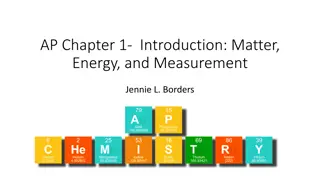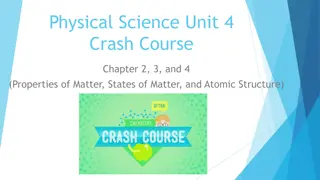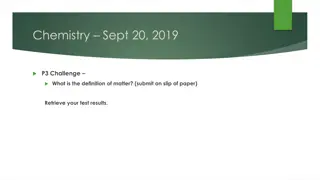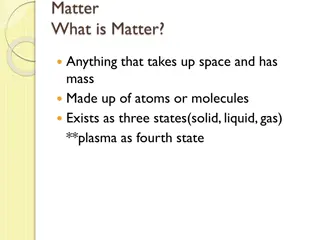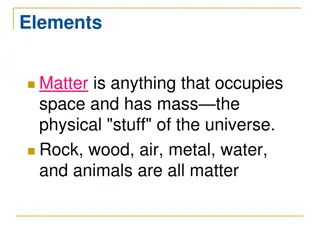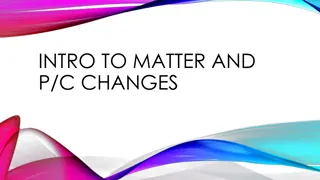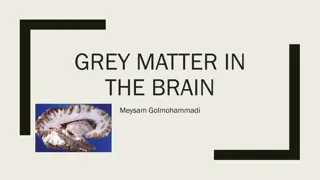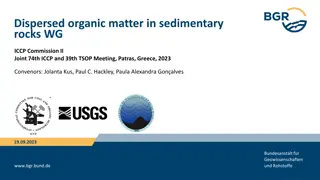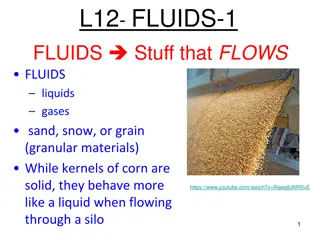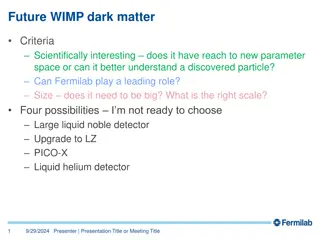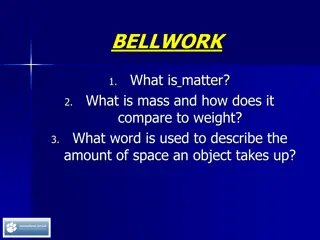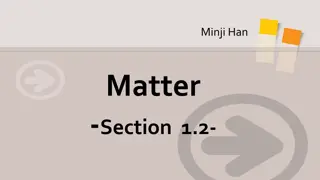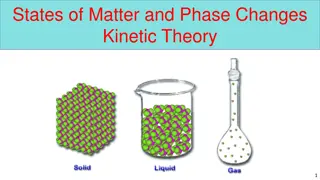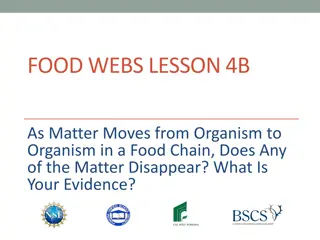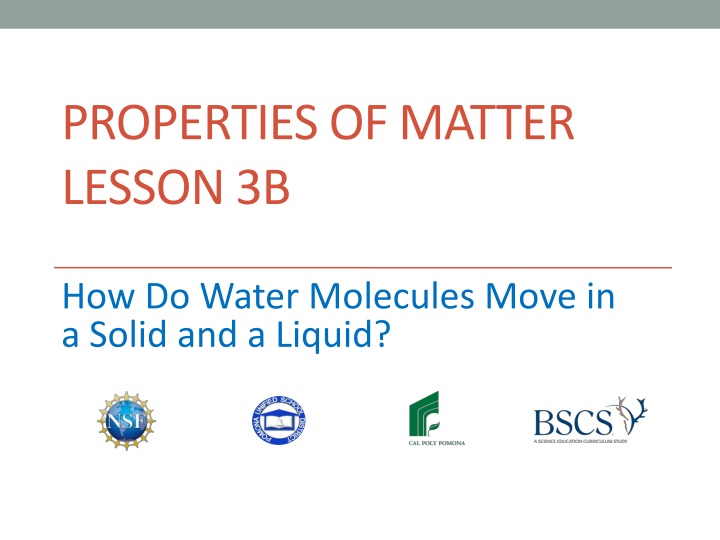
Water Molecules in Solid and Liquid States
Explore how water molecules behave in solid and liquid forms, comparing their movements and arrangements. Discover the differences between solids and liquids, and create models to visualize these concepts.
Download Presentation

Please find below an Image/Link to download the presentation.
The content on the website is provided AS IS for your information and personal use only. It may not be sold, licensed, or shared on other websites without obtaining consent from the author. If you encounter any issues during the download, it is possible that the publisher has removed the file from their server.
You are allowed to download the files provided on this website for personal or commercial use, subject to the condition that they are used lawfully. All files are the property of their respective owners.
The content on the website is provided AS IS for your information and personal use only. It may not be sold, licensed, or shared on other websites without obtaining consent from the author.
E N D
Presentation Transcript
PROPERTIES OF MATTER LESSON 3B How Do Water Molecules Move in a Solid and a Liquid?
Review: Liquid Water and Solid Water Our focus questions from last time: What is liquid water made of? What is solid water (ice) made of? Compare your drawings of liquid water and solid water with the samples of your classmates drawings. Think about how the pictures are alike and different.
Unit Central Questions What is matter made of? How can matter change?
Todays Focus Question How do water molecules move in a solid and a liquid?
What Is a Solid? What Is a Liquid? A solid is something that s rigid and has a definite shape. A liquid is something that moves or flows and takes the shape of its container. Ice is one example of a solid. What are some other examples? What are examples of things that aren t solids? Water is one example of a liquid. What are some other examples? What are examples of things that aren t liquids?
Imagine Fitting Inside an Ice Cube! What do you think you d see if you could shrink small enough to fit inside an ice cube? How do you think the water molecules in an ice cube might be arranged to give it a rigid shape?
Make a Model of Solid Water To make a model of solid water, arrange your Lego water molecules in the cardboard box. Place the molecules next to each other on the same level. Don t stack the molecules or take them apart! Try to fit as many molecules as possible in the space. Photo courtesy of BSCS
Make a Model of Liquid Water To make a model of liquid water, place all 10 of your Lego water molecules in the plastic sandwich bag. Don t take the molecules apart! Photo courtesy of BSCS
Why Are Solids and Liquids Different? Why do you think a solid has a definite shape, but a liquid takes the shape of its container? Solid Water Liquid Water Molecules vibrate in place. Molecules move around freely. Photos courtesy of BSCS
What Are Your Ideas Now? 1. Are the molecules in liquid water the same as the molecules in ice cubes? Why do you think so? 2. How do you think the molecules might be arranged or put together in liquid water and the ice cubes? Are they arranged in the same way or in a different way? 3. Do the molecules in liquid water and ice cubes move in the same way or in different ways? Why do you think so?
Lets Summarize! Our focus question: How do water molecules move in a solid and a liquid? How would you answer this question based on what we learned from our Lego models?
Key Science Ideas Matter is made up of atoms or molecules. The atoms or molecules that make up a substance are always in motion. A solid is something that s rigid and has a definite shape. In solid matter, the molecules vibrate in place. A liquid is something that moves or flows and takes the shape of its container. In liquid matter, the molecules move around more freely in their container.
Next Time Today we used our Lego models to help us understand how molecules move in a solid and a liquid. But what causes molecules in solids and liquids to move differently? Could heat have something to do with it? We ll find out next time!

